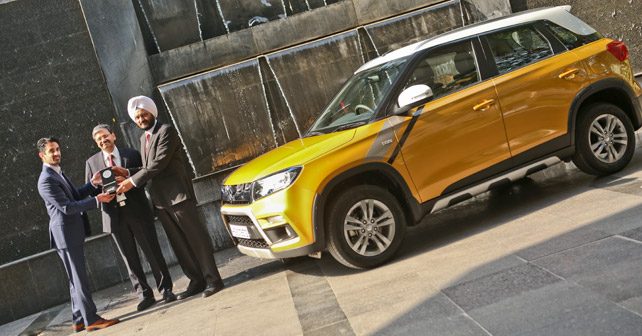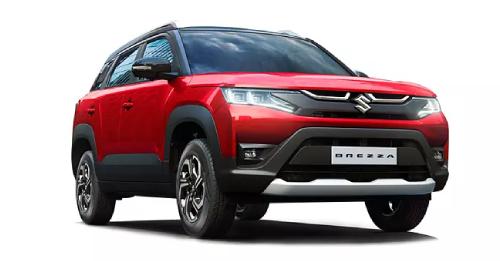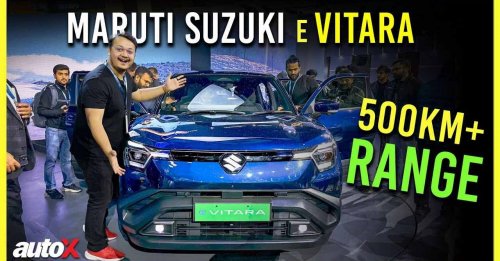
Maruti Suzuki Vitara Brezza
How has 2016 been for Maruti Suzuki so far?
RSK: It’s been excellent. So far, in the first half of the year, we’re at 12.1% growth and market share is at 47.2% – which is in line with our sales plans, as we were targeting double-digit growth and we’ve managed to achieve that.
Keeping in mind your production limitations with your current facilities, how urgent is the need for your Gujarat factory to start production?
RSK: If we possibly could, we would have started production there yesterday! We want it to happen as soon as possible. However, realistically, the fourth quarter of this financial year is when we’ll start getting vehicles from this new facility. We expect to start production by February or so, but the actual ramp up will take more time. We will start production slowly and then ramp it up, gradually increasing the capacity and the shifts at the plant.
How has the whole Nexa experience been for you and your dealers?
RSK: It’s been great. We’ve already done over 1,40,000 vehicle sales through Nexa outlets, and the most encouraging part is that 52% of the customers that we’re getting did not have Maruti Suzuki in their consideration set at all. So, that’s one of the single biggest achievements of the Nexa channel – wherein we’ve been able to get these ‘non-Maruti’ customers into the Maruti fold. The young generation, particularly, are quite digital savvy, so the initiative of making digital showrooms – and we’re the first ones to do so in the country – has been quite successful. Additionally, it’s also given us an image boost in the premium segment. For example, in the premium hatchback segment, we already have the leadership position. As far as crossovers are concerned, while the absolute numbers might not be very exciting for people who watch our sales volumes of over 1,20,000 units a month – but, still, the S-Cross is already a market leader in its segment. So it’s been quite a successful journey so far.
The fact that a lot of the R&D work for new cars is being done in India, does that help you to focus new products more effectively for the local market?
CVR: The Vitara Brezza was one of models that we were given the challenge to develop for the Indian market, and being able to make a product to Suzuki’s global quality standards, meeting all the expectations, and then getting the appreciation is obviously good motivation. It also demonstrates what could be possible in the future, in terms of the fact that there could be more responsibility given to the Indian R&D team. We’re now developing more products here, and we have a product roadmap on which we’ll be working. Obviously, since India is one of the largest markets for Suzuki, outside of Japan, a lot of action is happening here. As the customer here is changing, the understanding of the customer and their requirements, as well as the technology requirements and meetings the new regulations – all that puts a lot of responsibility of the Indian R&D team. Of course, we’ll always have the support of the Japanese team to help us, but in the future you’ll see more products being developed by the Indian division.
The Baleno RS is one of the first ‘driver-centric’ cars that you’ll be launching, can we see more cars like that in future?
CVR: Yes, we would like establish ‘RS’ with the Baleno. Let’s see how the market responds to it and what the volumes are. People ask for cars like these, but whether they would really purchase them in sufficient numbers is something that we have to see. But, yes, we would like to establish the RS brand in India.
What about the next-generation Alto, how is the development work on that progressing?
CVR: Well the new Alto’s direction is a natural progression for any model. You know product life cycles and how they are. Earlier it used to be a gap of eight to ten years between generations, now it’s reduced to between six to seven years – depending on the segment. So, in our entire portfolio, we’ll be making changes along the way. As we’ve already announced, 15 models in the next 5 years. As far as its design is concerned, that’s something we’re still working on and various options are still being considered. As far as development is concerned, since the Alto will be sold in many countries, we’re integrated with the Japanese engineering team on many aspects. Even after the design of a product is done, all the localization of the product is done here in India for every model, including the Baleno. Among the three stages of development, around 40% of the engineering – post the design release – happens in India for all the models. And because we need to develop the vendors to supply the components, the tuning, validation, and a lot of effort naturally happens in India – just the percentage of work done varies depending on the model.
What are your thoughts on the Euro VI regulations coming in in 2020? Do you have any reservations about that?
CVR: Oh yes, we’re facing big challenges! We’ve been discussing the issue of fuel availability in terms of the time available. With petrol, it’s manageable as far as the catalyst and the calibration is concerned. But we have more than fifty variants that we need to engineer to meet the norms. The diesel challenge is even higher, because we need to install the diesel particulate filter (DPF), and we also need to install the NOx reduction module. So the evaluation and validation is our concern, because we don’t have the fuel in the quality required. We’re asking for fuel to be made available at least a year in advance, which is not likely to happen. We would like to use commercial grade fuel to check our mechanism and to do a lot of fleet validation. Then, of course, there’s the practical problem of fuel adulteration, with kerosene being mixed with diesel – which affects the emission reduction mechanism. So, while it is a big move, there are still practical issues that need to be resolved before Euro VI can be rolled out in our market.

























Write your Comment